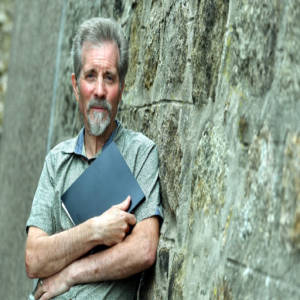Arms of Mary
Not a very inspiring photo I think, but this is going to be the first in an occasional series of famous/important figures from the Aberdeen area.
This first one is a stone plaque situated in a patch of grass in the Rosemount area of Aberdeen and is dedicated to Mary Garden world famous opera singer from these parts.
She was an operatic soprano with a substantial career in France and America in the first third of the 20th century. She spent the latter part of her childhood and youth in the United States and eventually became an American citizen, although she lived in France for many years and eventually retired to Scotland, where she died.
Described as "the Sarah Bernhardt of opera", Garden was an exceptional actress as well as a talented singer. She was particularly admired for her nuanced performances which employed interesting uses of vocal color. Possessing a beautiful lyric voice that had a wide vocal range and considerable amount of flexibility, Garden first arose to success in Paris during the first decade of the 20th century. She became the leading soprano at the Opéra-Comique; notably portraying roles in several world premieres, including Mélisande in Claude Debussy's Pelléas et Mélisande (1902). She worked closely with Jules Massenet, in whose operas she excelled. Massenet notably wrote the title role in his opera Chérubin (1905) for her.
In 1907, Oscar Hammerstein I convinced Garden to join the Manhattan Opera House in New York where she became an immediate success. By 1910 she was a household name in America and Garden appeared in operas in several major American cities; including performing with the Boston Opera Company and the Philadelphia Opera Company. Between 1910-1932 Garden worked in several opera houses in Chicago. She first worked with the Chicago Grand Opera Company (1910-1913) and then joined the Chicago Opera Association in 1915, ultimately becoming the company's director in 1921. Although director for only one year, Garden was notably responsible for staging the world premiere of Sergei Prokofiev's The Love for Three Oranges before the company went bankrupt in 1922. Shortly thereafter she became the director of the Chicago Civic Opera where she commissioned the opera Camille by 28-year old composer Hamilton Forrest. She sang roles at the Civic Opera until 1931, notably in several United States and world premieres.
Additionally, Garden appeared in two silent films made by Samuel Goldwyn.
After retiring from the opera stage in 1934, Garden worked as a talent scout for MGM. She also gave lectures and recitals, mostly on the life and works of Claude Debussy, until 1949. She retired to Scotland and in 1951 published a successful autobiography, Mary Garden's Story.
Her voice is preserved on a number of recordings made for the Gramophone Company (including some with Debussy at the piano), Edison Records, Pathé, Columbia Records and the Victor Talking Machine Company between 1903 and 1929.
She died in the sixties.
Mary Garden was one of four daughters; she and two others were born in Aberdeen, Scotland, while another was born in the United States.
Her parents, both from Aberdeen in Scotland, were Robert Davidson Garden (b. 19 Jul 1855) and Mary Joss Garden (née Joss, b. 23 Feb 1860),The family moved to Chicopee, Massachusetts, United States when she was nine years old. They then moved to Hartford, Connecticut a few year later, followed by a relocation to Chicago, Illinois in 1888 when Mary was fourteen.
- 1
- 0
- Canon EOS 300D DIGITAL
- 1/50
- f/5.6
- 119mm
- 100

Comments
Sign in or get an account to comment.


